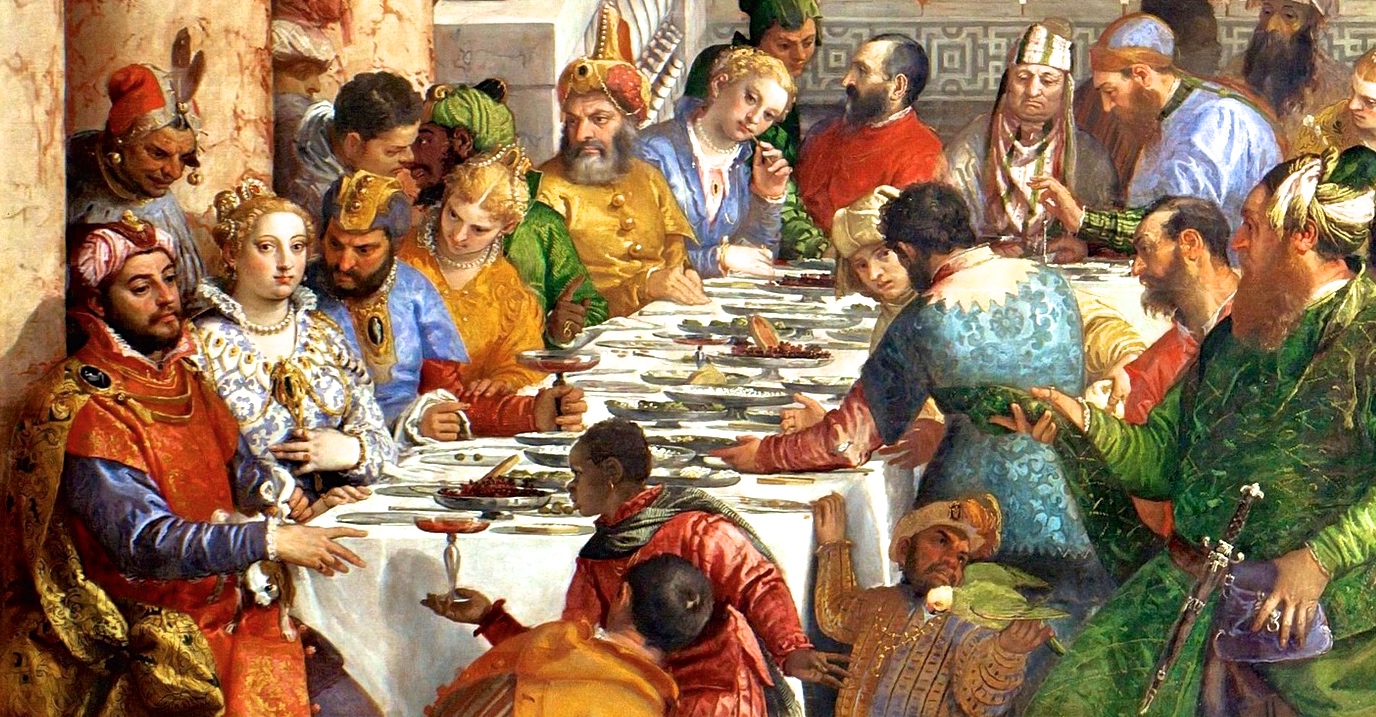Location, Location, Location: The Wedding Feast at Cana and the Mona Lisa
by Lisa Michaux, Tastemaker in Residence
Veronese, The Wedding Feast at Cana (1563), oil on canvas. Musée du Louvre, Paris.
The Italian artist Veronese painted the spectacular Wedding Feast at Cana in 1563. This massive work—measuring over 22 feet high and 32 feet long—hangs in one of the busiest galleries of the Louvre in Paris, yet despite it’s size and magnificence, it is often missed and/or ignored. More than 6 million visitors each year turn their backs to Veronese’s masterpiece as they jostle for position and gaze through the bulletproof glass and take pictures of Leonardo da Vinci’s Mona Lisa.
Here is my version of the Mona Lisa Selfie—you can see all the other cameras raised in the air and have to wonder at the quality of those photos! I especially love that the “Do Not Touch” signs on either side of the painting are almost as big as it is!
By contrast, here is the crowd in front of the Wedding Feast at Cana. You can even see one photographer on the right focusing on the Mona Lisa located on the opposite wall.
It is sad to think that all these people crowded in front of the Mona Lisa missed The Wedding Feast, a fabulous work that contains 130 people as well as several dogs, a parakeet, and even a playful cat. Veronese crossed the time continuum and we see Jesus, his Mother Mary, and a couple of apostles dressed in traditional biblical garb in the center of the work, while the rest of the guests at this fabulous feast are decked head to toe in contemporary 16th century Venetian fashion.
The subject of the painting is Jesus’ first miracle. He and his mother are wedding guests in the town of Cana and near the end of the night it becomes apparent that the wine is running low. Jesus asks the servers to fill several stone jars with water and we see this being poured to the bride and groom who sit at the far left of the grand table. The host tastes the spectacular vintage and wonders why the best wine was kept until the end of the night.
Just like any great wedding feast, there is a lot going on in Veronese’s painting and he pays glorious attention to every detail. The place settings, the elaborate hairstyles of the women and the turbans on the men, the vivid color and pattern of the textiles, the architectural setting, and even the variety of facial expressions reveal his mastery. Looking closely, we can tell that the artist has chosen to represent the moment when dessert is served. The offering is quince, a fruit symbolic of marriage. I love that the groom has a sweet little puppy (symbolic of fidelity) on his lap! When is the last time you were at a wedding with puppies? If you look closely, there is also a puppy walking along the table on the other side of the room—maybe not code, but certainly a fun twist on the wedding dinner! Veronese represents a truly fantastic feast that we want to experience. The day is gorgeous with only a few wispy clouds in the sky, the townspeople hang over the courtyard to get a glimpse of the fabulous offerings and the beautifully dressed bride and groom, and we can almost hear the melody coming from the musicians. And don’t forget that we are in the presence not only of Jesus’ first miracle, but the miracle of love and marriage.
This impressive work was created to hang on the end wall of the refectory (communal dining hall) at the Benedictine monastery on the Venetian island of San Giorgio Maggiore. While Veronese was given free reign to interpret the scene as he wished, he was given very specific instructions as to the size and position of the piece. Meant to fill the entire wall and to hang at precisely 2.5 meters from the ground, the painting was intended to create the illusion of extended space. I wonder if the monks were ever a little jealous of the party going on in their midst.





